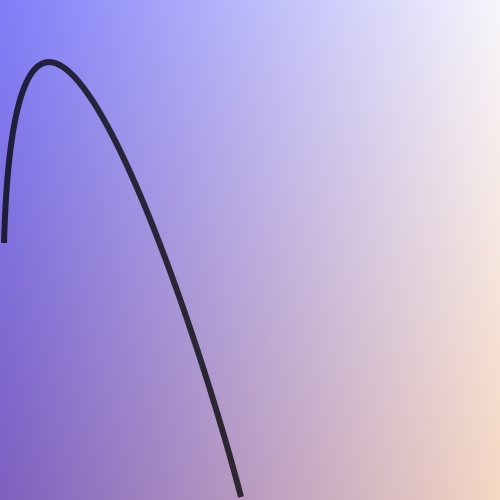Revisiting Charles Tilly: “How (and What) are Historians Doing?”
In April of 2008, noted historian and sociologist Charles Tilly died of lymphoma. In addition to the 51 books or monographs and over 600 articles, he left behind a legion of friends and admirers. By all accounts, Tilly was a prolific and highly influential scholar whose work encompassed a staggering breadth of subjects. Back in April I decided I should at least acquaint myself with some of his writing, and filed away a recommended article for later reading: "How (and What) Are Historians Doing?" The article covers several different topics, but begins by addressing the question: what distinguishes history from other disciplines in the humanities and social sciences? Tilly lists a six-part answer: 1. Time and place are fundamental characteristics 2. Historians specialize in specific times and places 3. The most dominant historical questions are rooted in national politics 4. The blurry line between amateurs and professionals 5. A strong focus on written documents and sources 6. A narrative style that focuses on the motivations of characters as supported by textual evidence I think some of these characteristics already feel dated, eighteen years after he wrote them. For instance, the popularity of transnational history weakens the case for Numbers 2 and 3. Historians are increasingly straying outside the traditional specialties bound by time period and geographic location, and into more thematic realms such as diaspora and women's studies. In many ways, this is a good thing. Without the constraints of specific time and place, scholars are able to tackle problems and questions from a radically different perspective. On the other hand, I would contend that number 4 remains stronger than ever - historical writing consistently maintains a level of common popularity that is largely out of reach for many other disciplines (although a similar case could be made for sociology and, especially today, economics). Journalists, genealogists, librarians, curators, reenactors, armchair enthusiasts - all are contributing to the field of history as much as those within the academy. Finally, even though digitization projects are making sources such as print media, maps, video footage, and material culture more accessible, I would agree with Tilly that the solid majority of historical research is conducted using written documents and sources. Later in the article, Tilly starts to systematically analyze common approaches to historical study. To do so, he uses a simple chart outlining these different approaches:  On the vertical access is the scope, or the size of the lens being used by the historian. On the horizontal access is a continuum of methodological/philosophical approaches. Like any good educator, Tilly then uses specific examples of historical monographs to illustrate the "Four Corners" of historical approach. For his sample, he selects Carlo Ginzburg's (1980) The Cheese and the Worms, E.P. Thompson's (1963) The Making of the English Working Class, E.A. Wrigley and R.S. Schofield's (1981) The Population History of England, 1541-1871, and Olivier Zunz's (1982) Changing Face of Inequality: Urbanization, Industrial Development, and Immigrants in Detroit, 1880-1920. After discussing each one individually, he charted them visually:
On the vertical access is the scope, or the size of the lens being used by the historian. On the horizontal access is a continuum of methodological/philosophical approaches. Like any good educator, Tilly then uses specific examples of historical monographs to illustrate the "Four Corners" of historical approach. For his sample, he selects Carlo Ginzburg's (1980) The Cheese and the Worms, E.P. Thompson's (1963) The Making of the English Working Class, E.A. Wrigley and R.S. Schofield's (1981) The Population History of England, 1541-1871, and Olivier Zunz's (1982) Changing Face of Inequality: Urbanization, Industrial Development, and Immigrants in Detroit, 1880-1920. After discussing each one individually, he charted them visually:  Although I have not read any of the works, Tilly did a great job of explaining them in terms of four different approaches to historical analysis. I was left with the urge to create my own charts using works I had actually read in the past year or two:
Although I have not read any of the works, Tilly did a great job of explaining them in terms of four different approaches to historical analysis. I was left with the urge to create my own charts using works I had actually read in the past year or two:
 Drew Gilpin Faust, This Republic of Suffering: Death and the American Civil War
Drew Gilpin Faust, This Republic of Suffering: Death and the American Civil War
 David Oshinksy, Polio: An American Story
David Oshinksy, Polio: An American Story
David Oshinsky's Polio covers a wide area of scope and approach, but it leans towards a large-scale, social-scientific book, given his detailed narrative covering America's medical struggle against polio in the twentieth century.

David Blight, A Slave No More: Two Men Who Escaped to Freedom
David Blight's A Slave No More maintains a relatively tight focus on the small-scale and humanistic approach. Blight uses the narratives of two escaped slaves to explore their decisions, motivations, and actions - all within the larger context of slavery's death throes and national emancipation.

Erskine Clarke, Dwelling Place: A Plantation Epic
Erskine Clarke's Dwelling Place takes a small-scale, more social-scientific approach to chronicling several generations of a slave family and a slaveholding family on a Georgia plantation. The scope is kept relatively small, with a huge amount of detail that draws upon a range of quantitative and qualitative sources.
I enjoyed the process of creating these graphs. Information visualization is a growing field, and one that I believe will become ever more important to historians. Although the above graphs are imprecise and subjective, they forced me to really consider the content of the books in a new perspective. Most of these books probably touched every corner of the graph at some point during the course of the monograph, but visually plotting their content necessitates a careful aggregation of the author's central themes and points. Where do the books cross the two axes of scope and approach? Where is their "centroid" on the graph? Just how far along each axis do they go? It's a refreshing exercise, and one that I think could work in the classroom as a visual and quantitative supplement to a traditional book review. I'd recommend anyone reading this to sit down with a pencil and paper, channel your inner Charles Tilly, and try to sketch out a graph for a favorite historical monograph. For those of you who have read the above books, I'd welcome any and all criticisms and disagreements regarding their graphs.